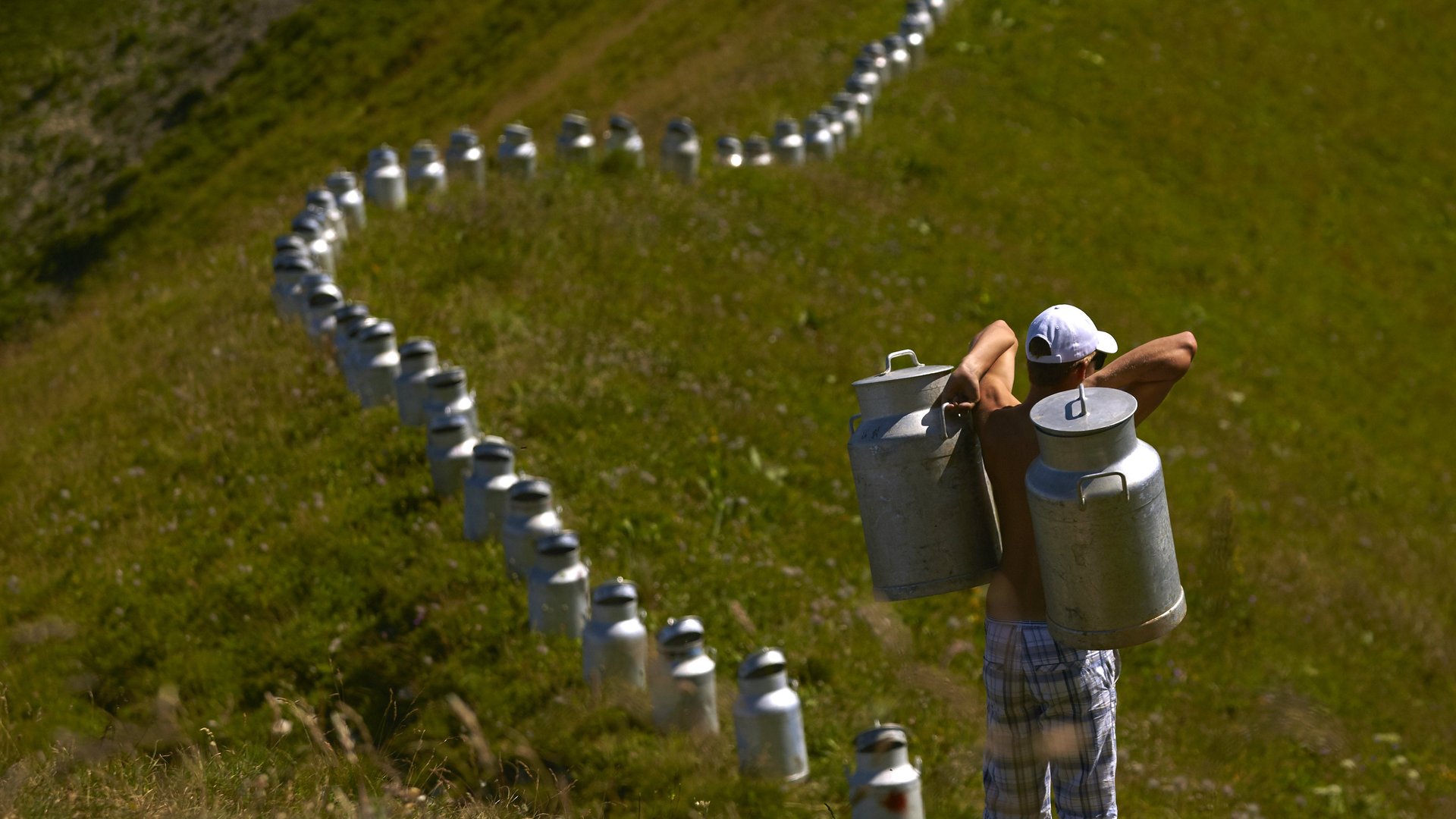Science has found a way to extend the shelf life of cold milk 300%
Milk, the first thing mammals consume after birth, is full of protein, vitamins, and minerals. But it doesn’t keep very long. That’s because raw milk is also full of bacteria. How long it stays fresh depends on how it’s treated.


Milk, the first thing mammals consume after birth, is full of protein, vitamins, and minerals. But it doesn’t keep very long. That’s because raw milk is also full of bacteria. How long it stays fresh depends on how it’s treated.
Most supermarket milk has been pasteurized and if unopened can keep in the fridge for around a week. Milk that is heated to temperatures above 135ºC (275 °F) can keep as long as six months at room temperature if unopened. But ultra-high temperature milk doesn’t taste very good.
Scientists have developed a new technique that not only makes milk safer, but allows it to keep for nearly two months when refrigerated. And, it tastes as good as fresh milk. In tests, volunteers detected little difference in color, taste or smell up to 36 days after processing.
The technique adds just a fraction of a second to the lowest temperature pasteurization process. Invented by French chemist Louis Pasteur in the 19th century, this involves heating milk to temperatures of between 70 to 120ºC (158 to 248°F) to kill bacteria. The higher the temperature and longer the heating process, the safer the milk. But heating also deforms proteins and destroys vitamins and minerals while making milk taste lousy.
Here’s how long different kinds of milk last:
- Pasteurized milk: up to four hours at room temperature if unopened. Five to seven days if refrigerated below 4°C (40°F).
- Filtered milk: Passed through a fine filter to sift out souring bacteria, if unopened filtered milk can be kept up to 45 days when stored at temperatures of up to 7ºC (45 °F).
- Ultra-high temperature (UHT) milk. Heated to at least 135ºC (275°F) for two to four seconds and stored in special packaging, UHT milk can last six months at ambient temperatures if unopened. Once opened, it should be refrigerated and treated like fresh milk.
- Frozen milk: three months.
- Evaporated/condensed milk: one year at ambient temperatures.
- Dried milk: up to one year in powdered form.
Bruce Applegate and colleagues at Purdue University have developed a low temperature short time modification to the pasteurization process that subjects milk to more heat under low pressure. Using special equipment they took regular pasteurized milk and sprayed it through nozzles at a controlled pressure. They then heated up the resulting tiny droplets to just below 72ºC (161°F) for 0.02 of a second.
This brief exposure killed 99% of the bacteria while preserving the taste and nutrients. Pasteurization alone killed bacteria by a factor of five on a scientific count, but the additional step boosted this to seven or eight. “Whatever does survive is at such a low level that it takes much longer for it to multiply to a point at which it damages the quality of the milk,” Applegate said in a press statement.
There were no signs of the milk going bad (i.e. bacterial growth) for up to 57 days—five weeks longer than standard pasteurized milk. This new process could not only extend the shelf life of fresh milk but also potentially allow it to be transported further, opening up new markets for farmers.